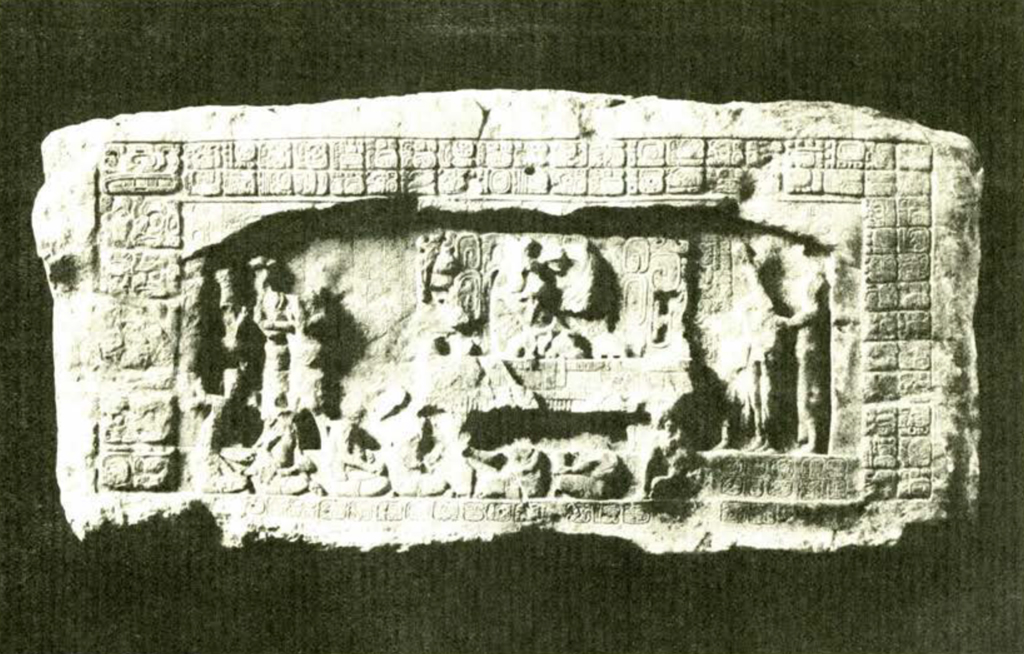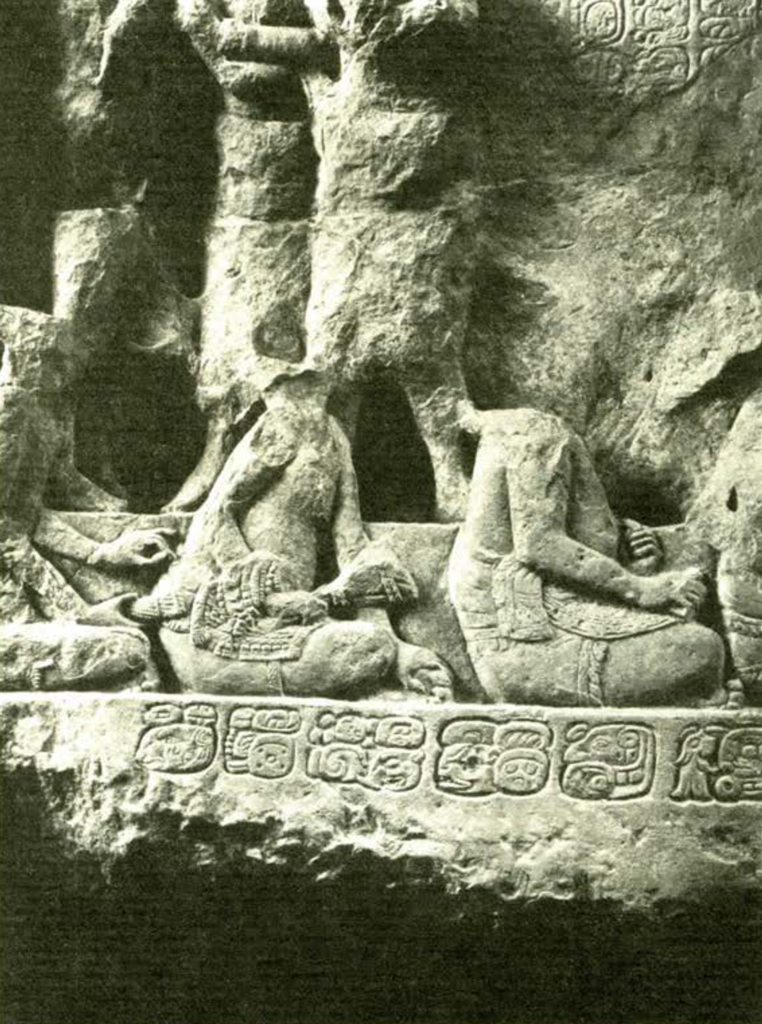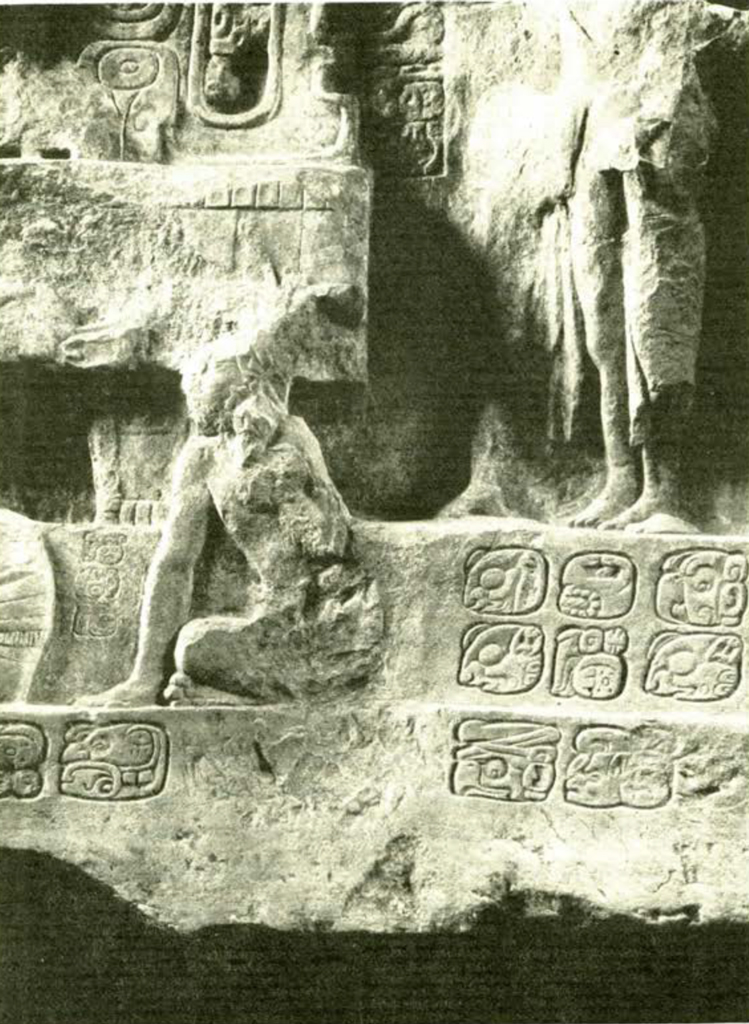THE most important and spectacular discovery made by the Eldridge R . Johnson Expedition to the ancient Maya city of Piedras Negras in Guatemala, last spring, was that of a magnificent carved stone lintel [Plates I to III]. This lintel is one of three, or possibly more, which covered the doorways of the temple around which were placed some of the most artistic stelæ or sculptured monuments which are known in the entire Maya region. All authorities who have seen the lintel consider it the finest known specimen of Maya art in stone.

The lintel measures forty-nine by twenty-four inches and is five and a half inches thick. It is carved, as are all the sculptures of Piedras Negras, of a buff-colored limestone which is soft and easily carved while wet. The sculpture occupies almost the entire face, the margin being quite narrow but irregular. The maximum depth of the relief is one inch and a half.

Image Number: 30807
The central scene, in high relief, framed in margins of hieroglyphs, consists of three groups of human figures and probably depicts an aboriginal ceremony. In the center a figure, probably a chief or the personification of a deity, kneels upon a rectangular altar, two of the four legs of which are shown. His delicately carved left hand rests on the edge of the altar. The right arm, now missing, was probably raised. The textile designs on his ornamental breech-cloth are perfectly portrayed and the swirl of his great plumed headdress is magnificently done. Behind him is a spotted jaguar robe and in the background are ornamental designs. The tasseled fringe of the altar is carefully shown. The group to the right probably consisted of four figures, two adults and two children. The poses are most naturalistic and Grecian in quality, the feet being especially well carved, two of them in full round, the others in high relief. The extended arm of the figure to the right is undercut. This lintel is the sole known example of Maya relief carving in full round, with the exception of Stela 15 from the same temple, the elbows of which are undercut.
To the left is seen a group of three standing human figure in very high relief. The postures are most naturalistic, the hands crossed over the breast being the Maya gesture of reverence.

Image Number: 30808
Below the altar is a row of seven seated human figures, admirably carved in perfect proportions and in naturalistic poses. The hands, feet, and even the fingernails are excellently portrayed. One of the figures is holding his foot; most of the others hold jars, fans, or other unidentified objects. The ornamentation of their textile garment is delicately carved. Probably all originally had ornamental headdresses; that of one immediately in front of the altar is in the form of a long-billed bird. The heads of the figures in front of the altar are unfortunately gone but apparently were carved in full round above the depression below the altar. The careful study of these figures will add tremendously to our knowledge of Maya ethnology.
The hieroglyphs are delicately carved in cameo and in intaglio. One hundred and fifty-eight glyphs are shown in fourteen different groups, this being the largest number known from any lintel. As in most long Maya inscriptions, the meanings of the majority of these are unknown, but every new inscription aids in the determination of these undeciphered glyphs. The Maya hieroglyphs that have been deciphered are all calendrical, astronomical and mathematical. Among the glyphs in this lintel six dates can be deciphered, all within a period of eight years. These dates arc given to the exact day by a long count from a definite starting point. Unfortunately the exact correlation with our chronology is still under dispute, but according to the correlation now most generally accepted the latest date given on the lintel is December 2, 757 A. D.
Many other interesting specimens, mainly of scientific importance, were excavated by the expedition, the best of which will be placed on exhibition with the lintel. Among these are the contents of many ceremonial caches which were buried under altars, under stelæ, and under the floor of the principal temple. Flint and obsidian objects chipped in peculiar shapes, and ornaments of jade and shell form the bulk of these.
J. A. M.

